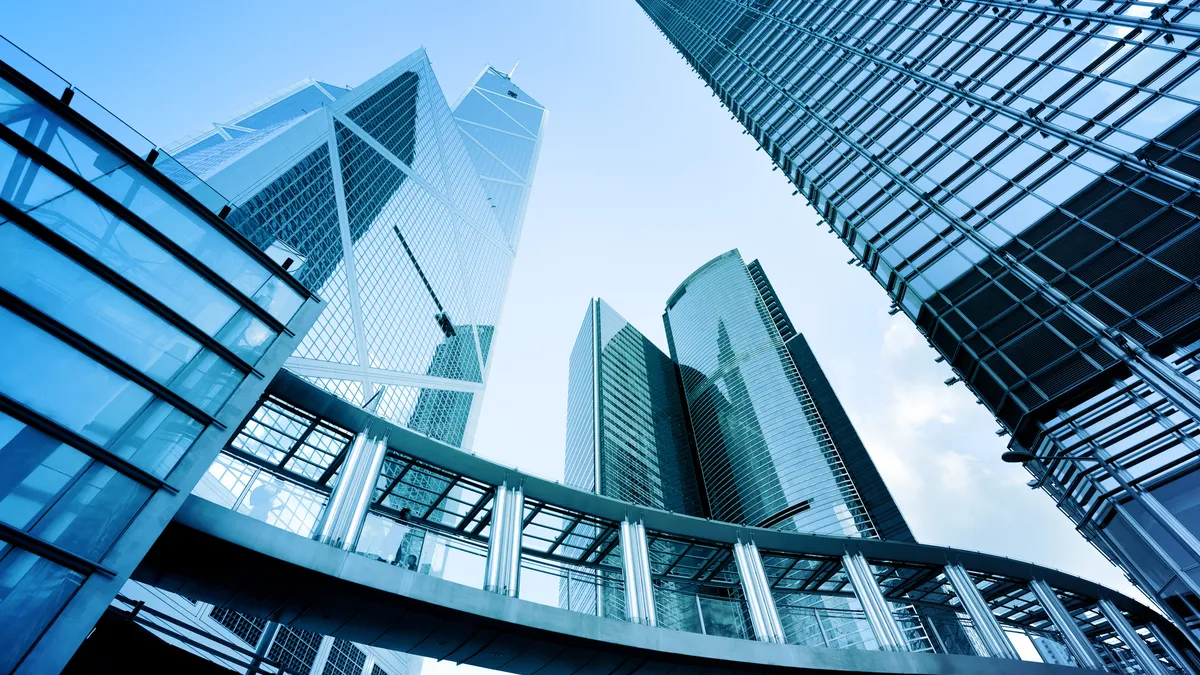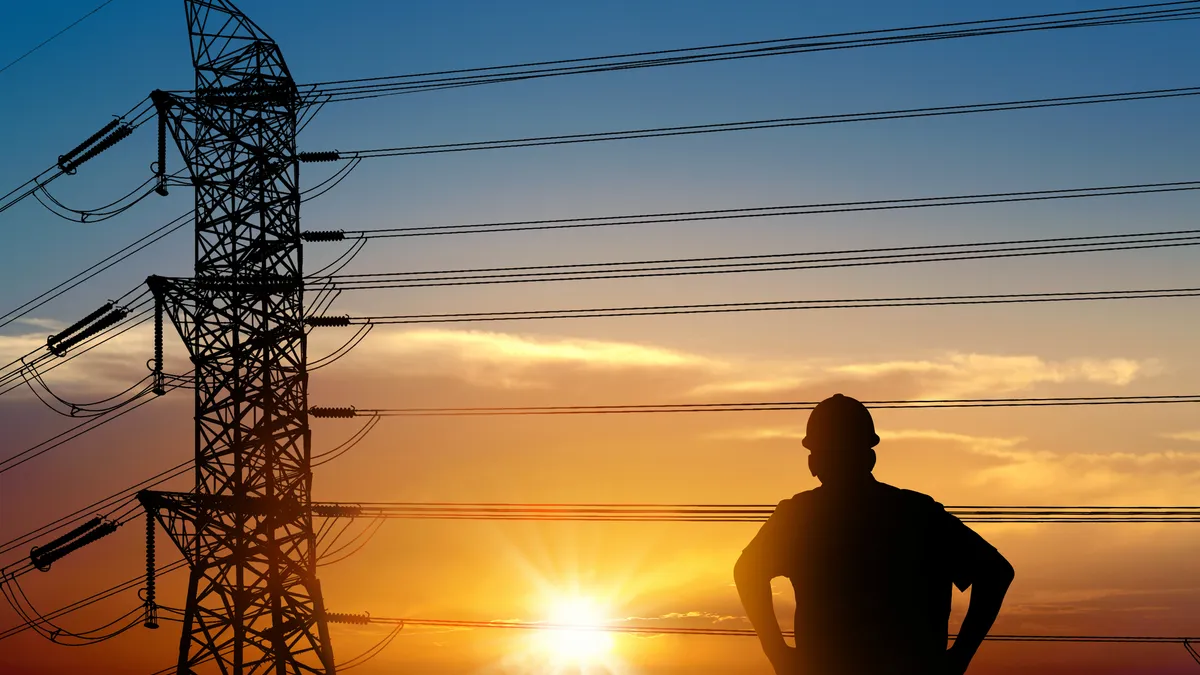Cameron Brooks is executive director of THINK Microgrid.
Resilient buildings are more than just sustainably built structures — they are crucial safeguards for our communities, providing peace of mind during power outages or other disruptions by supplying essential services like heating, cooling and ventilation. More importantly, resilient buildings have the potential to lead the transformation of our electric grid, lowering emissions, increasing public safety and supporting our economy, but only if they are intelligently connected to the larger grid.
Unfortunately, two recent actions taken by the U.S. Department of Energy work against that vision and deserve far more public scrutiny than they have received to date. The first action is the new Federal Building Performance Standard that prohibits any form of on-site fossil fuel emissions from any new federal building. The second is a new federal definition of zero-emissions buildings that would require local governments nationwide to prohibit any form of on-site fossil fuel emissions or risk losing federal funding.
On the surface, prohibiting on-site emissions might seem like an environmentally beneficial approach, but a closer look reveals significant human health and public security risks the DOE has not considered. One impact of the DOE actions that is making headlines is the requirement that appliances like gas stoves be eliminated from new buildings nationwide, which for most could be viewed as simply an inconvenience. The more significant effect of the DOE actions is they will effectively ban more resilient building solutions like microgrids and combined heat and power, or CHP, that are among the cleanest, most versatile and efficient ways to power buildings.
A microgrid is a self-contained electrical network that can generate electricity on-site precisely when it’s needed most — as a reliable backup when the grid goes down or when electricity prices spike. They can be powered by a range of sources, from renewable energy or natural gas generators, and even energy storage units. When power reliability and cost are critical concerns, microgrids offer a flexible and robust solution. CHP, or cogeneration, is another method that gives buildings flexibility and adaptability during outages. CHP generates electricity on-site and then captures and reuses the heat that would typically be wasted and instead uses it for essential heating or cooling. CHP is adaptable to a wide range of fuels, whether fossil-based or renewable, making it another flexible and efficient option.
Businesses and municipalities need the option and ability to power resilient buildings with distributed energy solutions like microgrids and CHP to protect themselves and their communities from a grid that is increasingly unreliable and unsafe. CHP and microgrids are cleaner and more efficient than the old power plants that supply the grid today. By developing more, not less, of these intelligent resources, we not only address what businesses and municipalities are looking for on “black sky” days, but also during the day-to-day operations of the grid under “blue sky” conditions.
With these needs in mind, there are two apparent problems with the recent actions by the DOE. The first problem is that the increasing electrification of buildings without allowing diversified on-site solutions only drives up emissions for the larger grid. This is because the main electric grid remains largely powered by older fossil fueled power plants, and to make matters worse, they are too often located in economically disadvantaged communities. The DOE federal building rule and zero-emissions building guidance do not take this into account. Instead, they prohibit on-site emissions while ignoring the off- site emissions from those dirty old power plants and the human health impacts they create in the communities that host those plants. The new rules allow buildings to offset these grid emissions with renewable energy credits and then claim “zero-emissions” status, but they prohibit any similar approach for newer and cleaner CHP and microgrids.
The new rules don’t provide an honest accounting of emissions and, unfortunately, the impacts will be felt most acutely in the disadvantaged communities that host legacy fossil-fuel plants. We are already seeing this effect in places like New York and California where 1950s vintage power plants are being pulled out of mothballs to meet the increased need for electricity due to the electrification of the economy.
The second problem is that this approach to electrifying the economy will make our energy systems less resilient, not more resilient. By eliminating a flexible mix of on-site solutions, precisely when we face increasing risks of extreme weather and catastrophic events, we will concentrate the risks to our energy supply all onto a system that is increasingly brittle, in need of reinvestment and vulnerable to the nation’s most prominent adversaries. The national security implications of taking all of our energy eggs and placing them into one basket are magnified by the fact that these rules simultaneously prohibit the most effective way to mitigate those risks: building emission-reducing CHP and resilient microgrids that can operate to power critical facilities, respond to grid outages and increase opportunities for local renewable energy.
We do not believe that the American people benefit from a definition of “zero-emissions” that willfully ignores the real emissions of backup generation or centralized fossil fuel plants. This only increases the risks we face together, especially when people, businesses and communities are seeking microgrid, CHP and distributed energy solutions for the day-to-day challenges they face in the form of rising rates and increasing unreliability.
We fully support the Biden Administration and DOE’s ambitions to decarbonize buildings and other sectors of the economy. But we should be doing this with clear-eyed approaches that are based on honest assessments, not wishful thinking. As a matter of federal policy, we should not sacrifice the national priorities to increase resilience and clean energy solutions to an ill-conceived set of mandates that discriminate against distributed energy solutions.
The DOE and Biden Administration have declared microgrids to be a “fundamental building block” of the grid today and in the future. Let’s make that a reality and recognize that resilient buildings have a unique role to play in decarbonizing the grid and moving us toward a better future. These rules miss that opportunity. But it’s not too late to clarify how CHP and microgrids can be supported as these new rules are implemented.






















